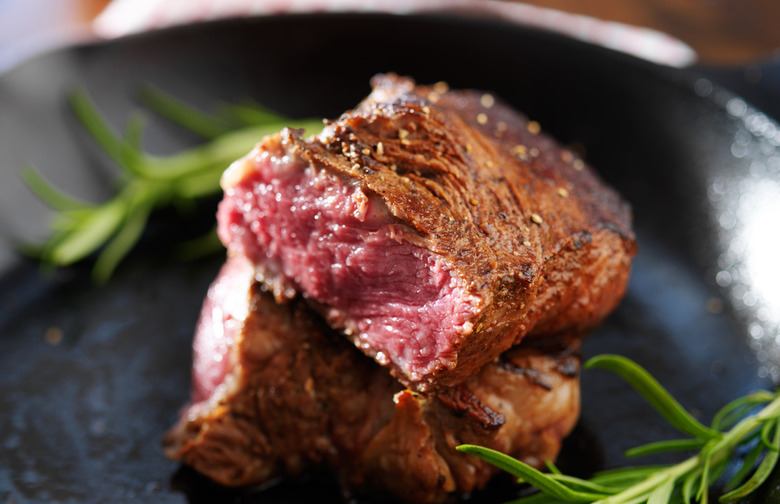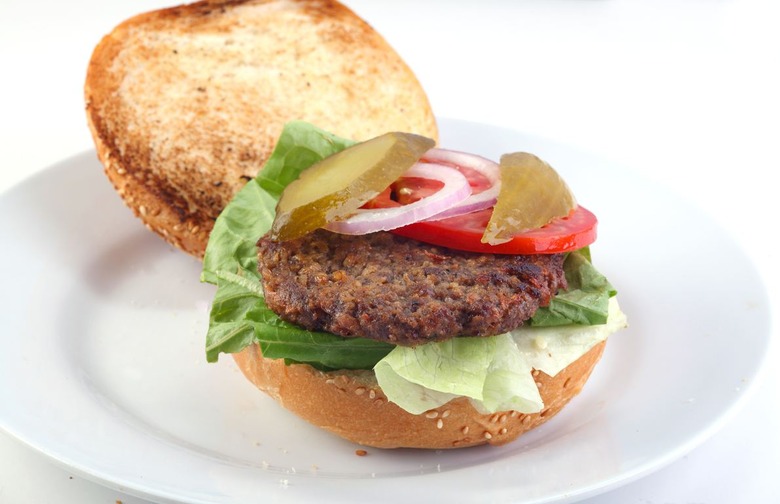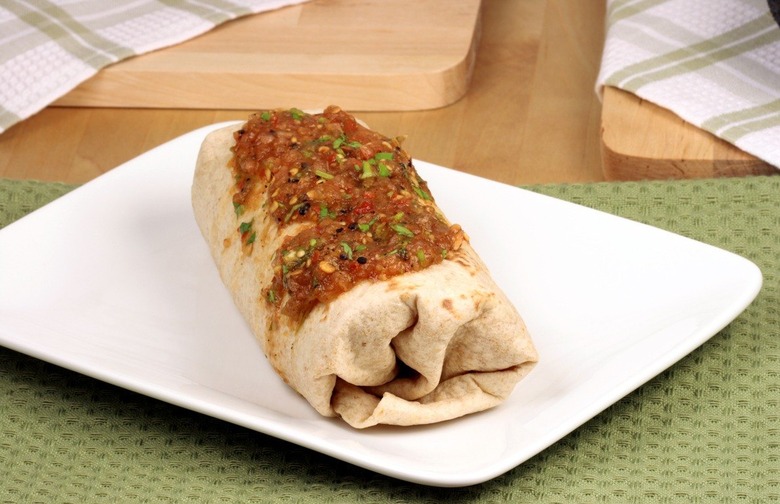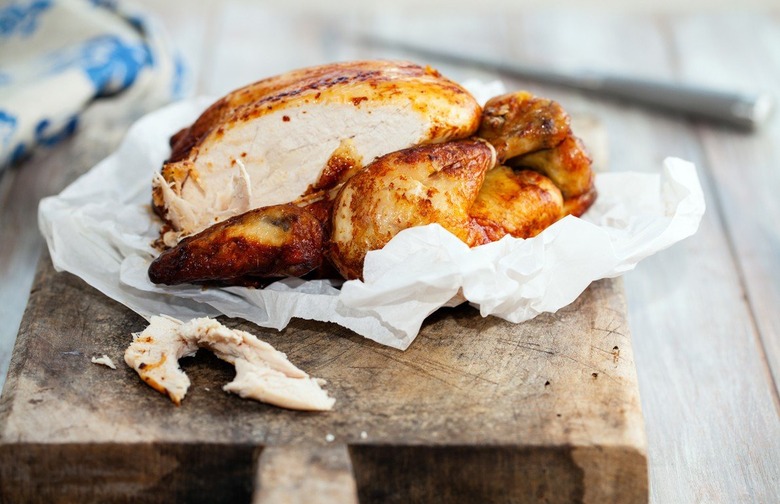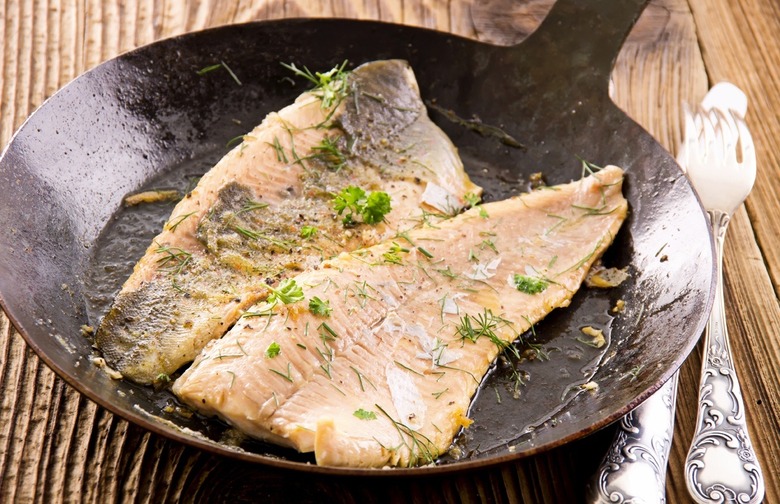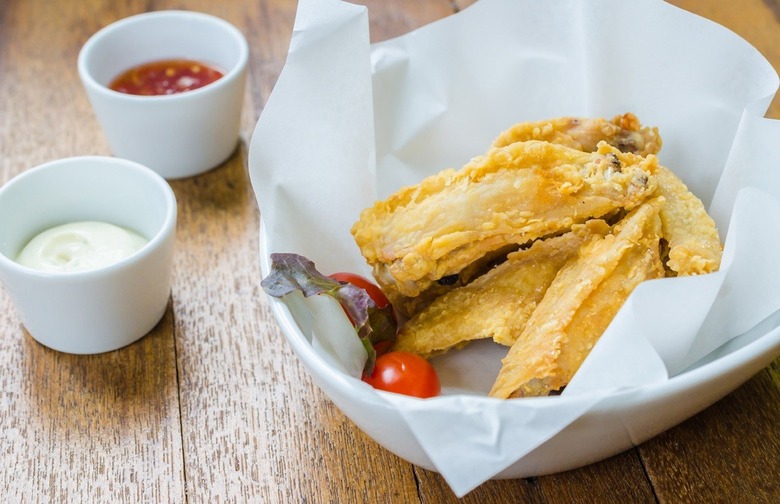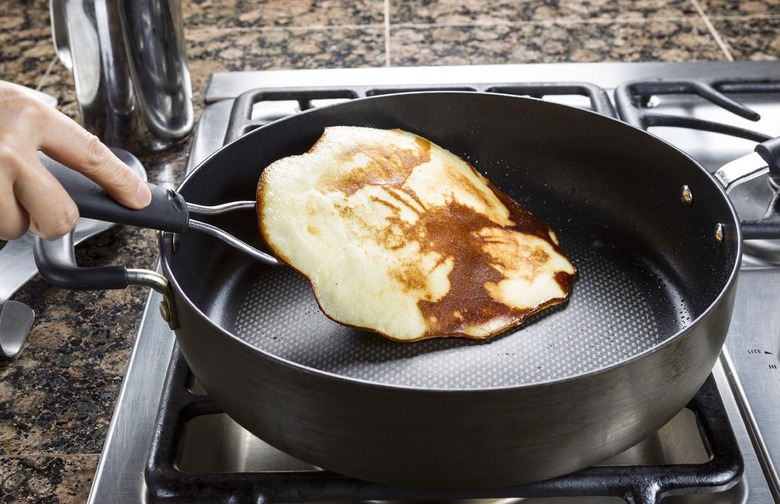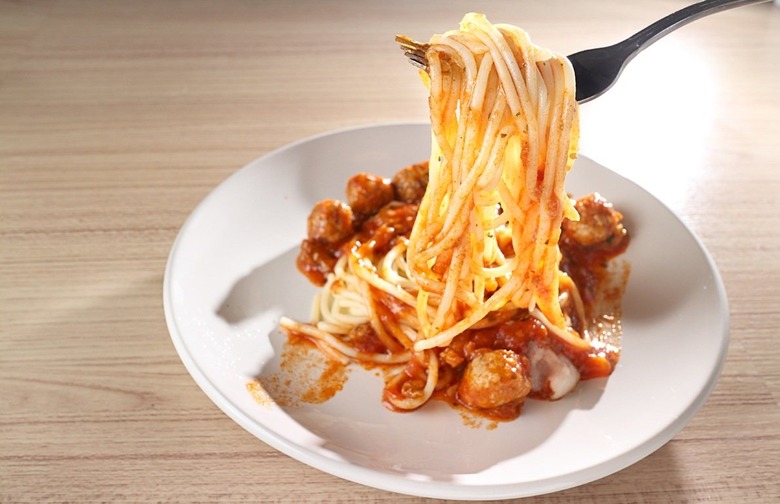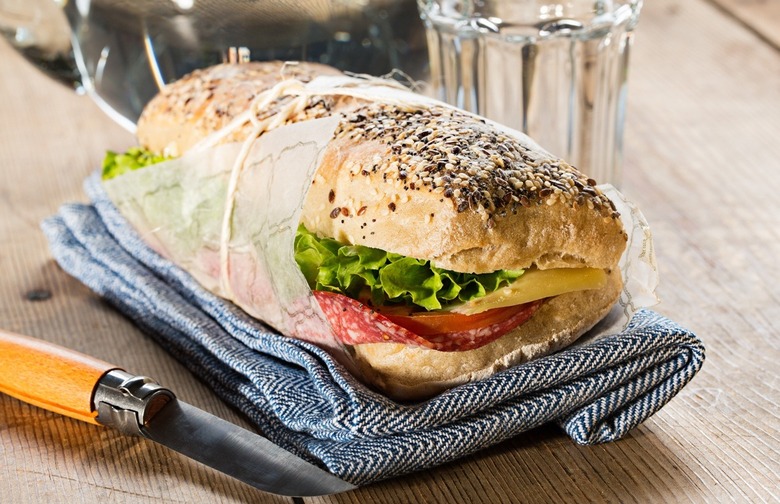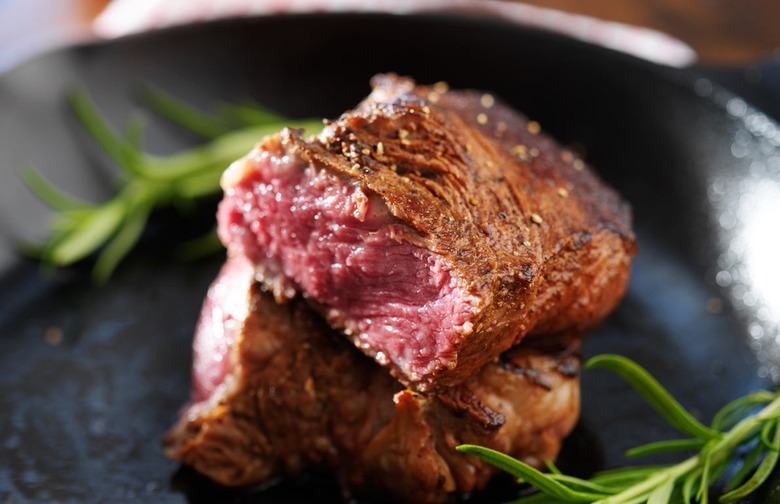The Best Ways To Bring Doggie Bag Leftovers Back From The Dead
Opening up the fridge and reheating leftovers is usually an exercise in futility. We dump it onto a plate, pop it in the microwave, wait until it's hot, and eat it sadly, wistfully remembering its earlier days as an expertly prepared, artfully plated dish. But don't despair: while you'll never be able to reheat a dish to perfectly echo the way it tasted when you first ordered it, there is a way to revive it properly.
Burgers
If you're trying to reheat a burger, the first step is to break it down into its components. The lettuce and tomato are most likely soggy goners: toss them. The bread might also be soggy; if you can swap it out with a fresh bun, you definitely should. As for the burger patty itself, let it come to room temperature, scrape the excess bun, cheese, and other toppings off of it, then sear it in a hot pan on both sides until heated through, but no longer (if you'd like, add a slice of cheese, then cover the pan for 30 seconds). It'll most likely be closer to medium-well than medium-rare, but if there's any pink left in a reheated burger you should consider it a victory.
Burritos
Got half a burrito left over? Putting it in the microwave will leave you with a soggy mess. Here's what to do instead: Wrap it in aluminum foil and heat it in a pan for about 15 minutes with a weight on top of it, flipping it every few minutes (this will yield a nicely browned tortilla), or wrap it in aluminum foil and stick it into a 350-degree oven for about 15 minutes. In either case, it's important to let the burrito come to room temperature, or else it won't heat evenly.
Chicken
If you're looking to reheat skin-on chicken, bring the chicken up to room temperature and heat it under a broiler for about 10 minutes. This method will give you the added bonus of crispy skin. If it's a boneless, skinless chicken breast, heat it for a few minutes on each side in a medium-hot pan. Microwaving will only lead to flabby skin and rubbery meat.
Seafood
You can reheat fish in a couple ways: either place it on a nonstick pan in a 350-degree oven for about 10 minutes, or sear it in a nonstick frying pan for about a minute per side. If the skin is still on, make sure it's skin-side-down in the frying pan. Seafood like shrimp should also always be reheated in a pan. If seafood is more than few days old, we'd recommend tossing it.
Fried Food
Anything deep-fried will be exceedingly difficult to revive without the aid of a deep-fryer. If you happen to have a deep-fryer, give the room-temperature fries, fried chicken, chicken nuggets, etc. a few minutes submerged in the hot oil and they'll be good as new. Otherwise, place the food on a wire rack in a hot oven until crispy again. Wings will never be as crispy as they once were, but they'll still be mighty tasty after being reheated in an oven.
Pancakes
The best way to reheat pancakes is to pretend you're cooking them fresh: heat a nonstick pan, melt some butter, add the pancakes for about a minute per side, and make sure you've got syrup on hand.
Pasta
The best way to reheat pasta is by tossing it with a little oil in a frying pan until heated through. If there are larger additions like meatballs, 30 seconds in the microwave before adding them to the pan won't hurt too much. If the sauce is drying out in the pan, add a little bit of water. This is also a great time to add an extra helping of grated cheese.
Pizza
The best way to reheat pizza has long been a contentious discussion, but a couple of things have been agreed upon. It's essential to make sure that your chosen surface is hot; whether that's a preheated pizza stone or a frying pan in a hot oven or a cast iron pan on the stove doesn't matter too much. Then it's just a matter of melting the cheese: covering the pan or closing the oven door should take care of that.
Sandwiches
A cold sandwich can usually be eaten right out of the fridge. Simply letting the bread come up to room temperature will help it seem a little less stale. Replace the bread with fresh bread if you can. Fillings can be transferred right over if they're cold; if they're supposed to be hot, let them come to room temperature and then give them some time in a hot oven before adding them onto the bread.
Steak
When it comes to reheating steak, take chef Kerry Heffernan's advice: "You'll be disappointed one hundred percent of the time if you try to reheat a steak looking for it to be exactly the same as it was the night before. I always use the opportunity to make a warm sandwich."
Heffernan advises bringing the steak up to room temperature, heating it up for a minute or so per side (just to bring it back up to temperature), then letting it rest and thinly slicing it. From there, the options are endless.
Salads
If you're planning on taking a salad home to eat later, don't let it come into any contact with dressing. If it's dressed, you have about a two hour window to eat it. If it's undressed, transfer it into a Ziploc bag when you get home, keep it in the vegetable crisper, and make sure you eat it before it wilts.
